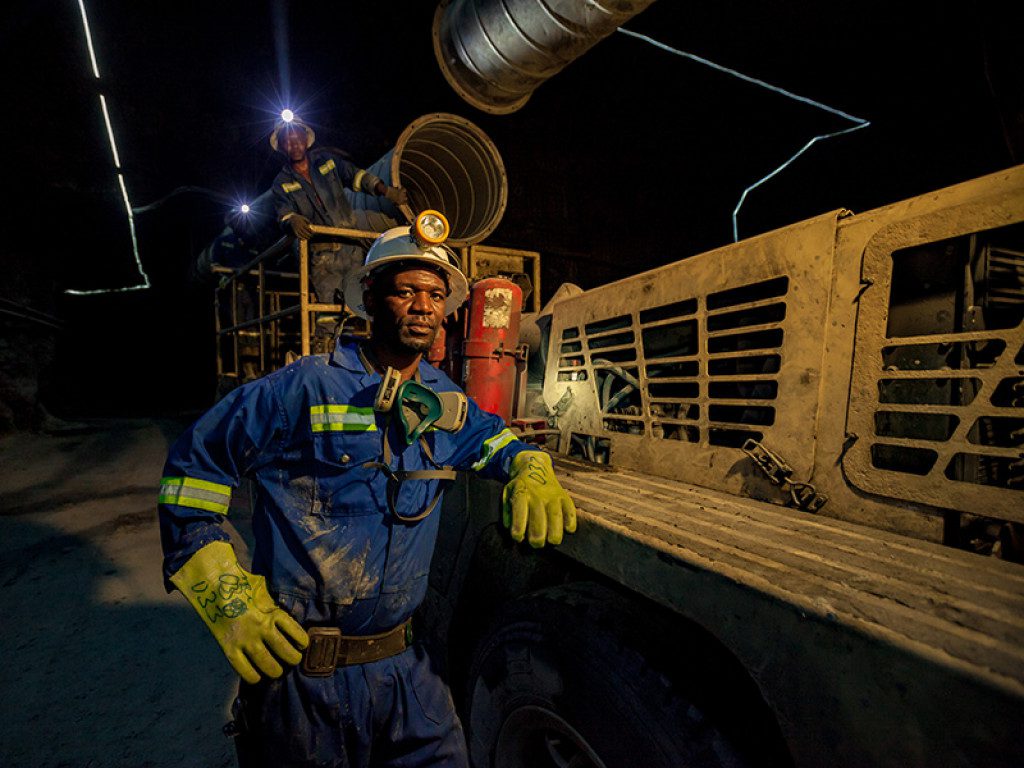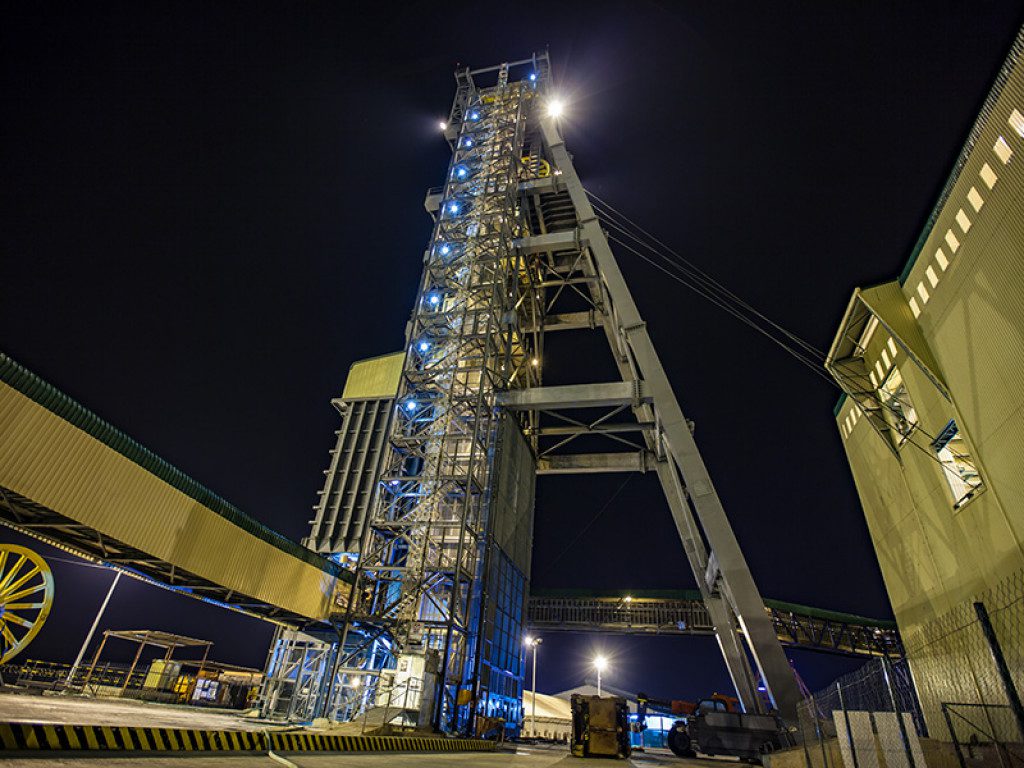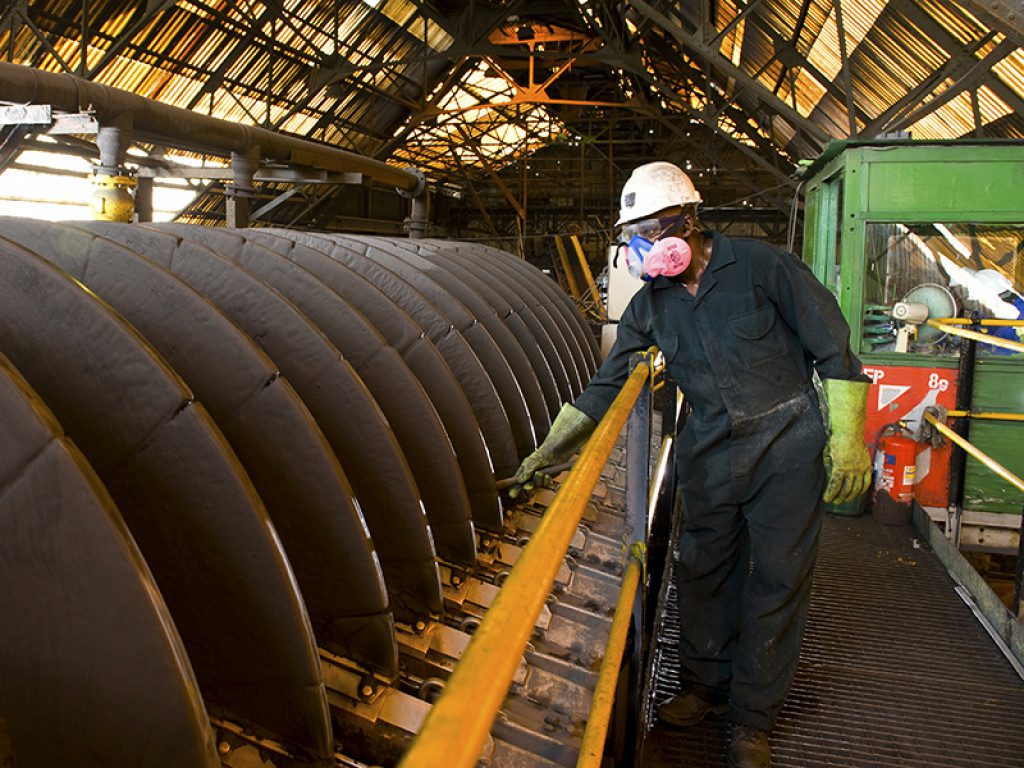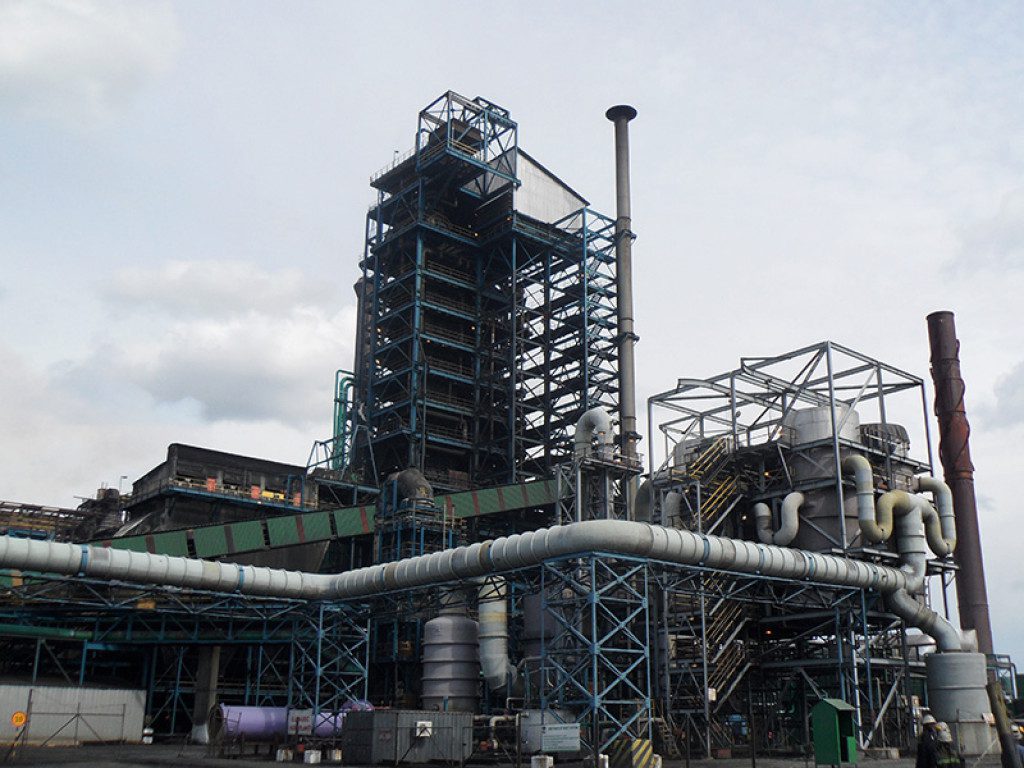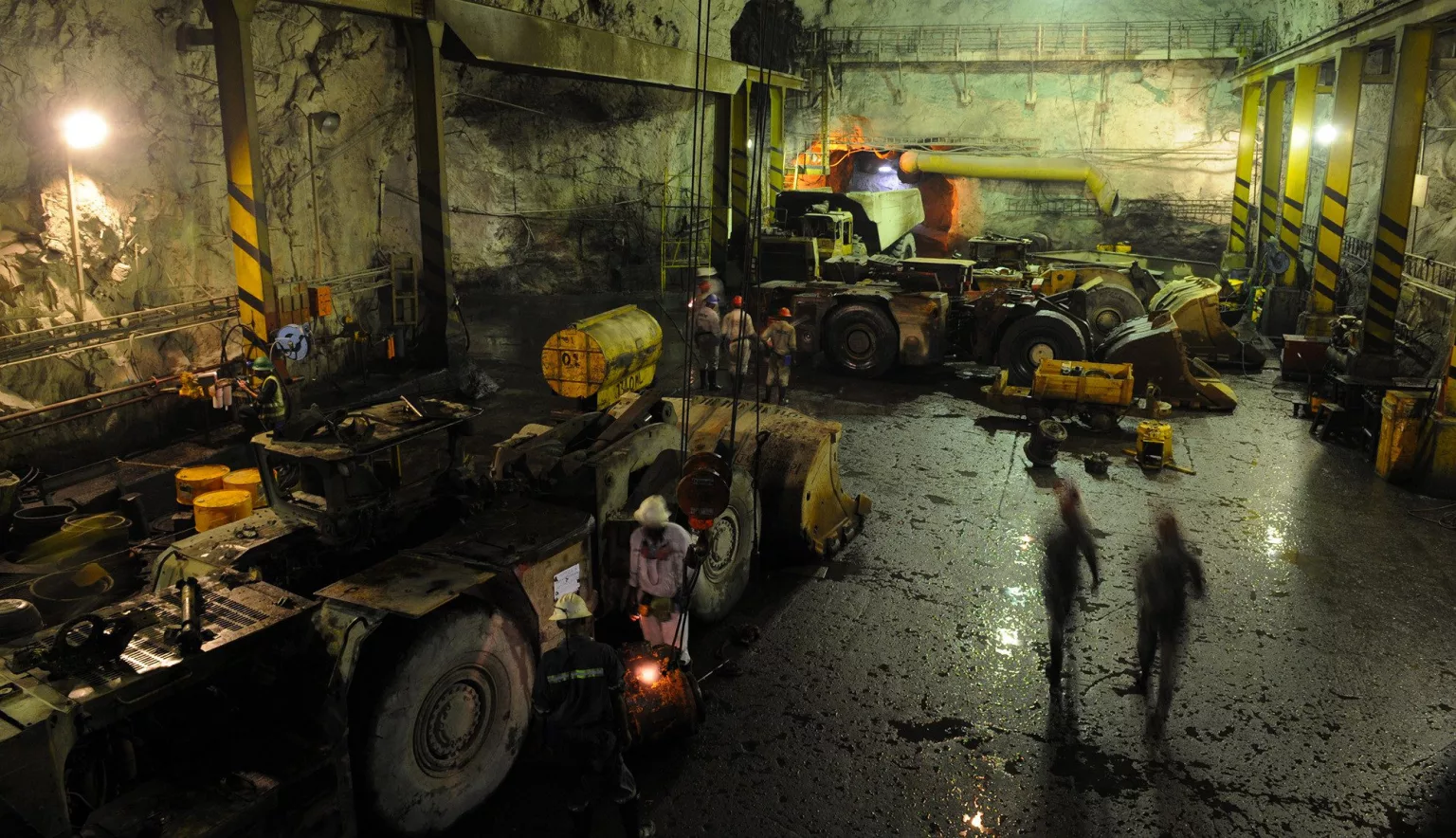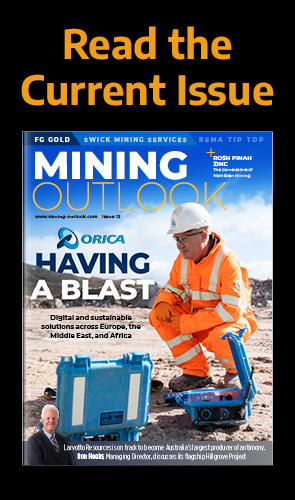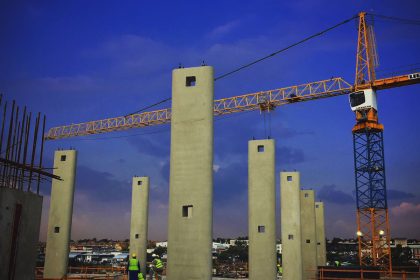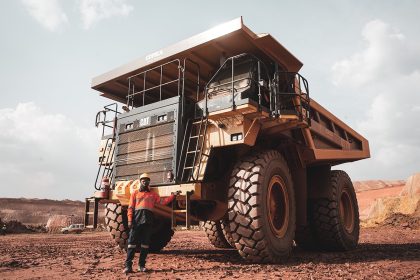The Executive Team at Mopani Copper Mines (MCM) discuss a copper-fuelled future for Zambia and their ambitious mission of ‘Making Mopani Great Again’.
INTRODUCTION
For over 10,000 years, mankind has worked with copper. In early civilisation, copper found usage as the only metal known to man for over five millennia. Fast forward centuries, and the prevalence and usefulness of the metal has not waned. In the landscape of south-central Africa, copper resources find their heartland in the high plateaus of Zambia.
Snaking along the breadth of Central Africa, traversing northern Zambia and the Democratic Republic of Congo, lies the Copperbelt – a resource-rich area reputed for copper mining. Within Zambia, this mineral wealth is concentrated within the Copperbelt Province, where the towns of Ndola, Kitwe, Chingola, Kalulushi, Chililabombwe, Luanshya, and Mufulira are hotbeds of copper mining and production.
In an industrial context, mining is the lifeblood of the Zambian economy. As the rose-tinted foundation for the country’s economic growth, the upkeep of what remains of the country’s copper reserves is integral to Zambia’s development.
Indeed, during Zambia’s nascent days of independence in the 1960s, the nation’s prosperity entirely depended on the exploitation of its rich copper reserves. That was before the fluctuation of prices for the resource on the world market indicated an unpredictability that, in turn, alerted the need for diversification.
As a commodity, the price of copper is volatile, leading to an unreliable income and a heightened cost of production within the mining realm. Yet in today’s context, those market conditions are very much in copper’s favour.
“It’s time to get Zambians involved in a major way to contribute to the economy of the country,” opens Charles Sakanya, CEO at a proud national mining organisation on the cusp of greatness.
Enter Mopani Copper Mines (MCM).
As a producer of copper cathode, MCM has suffered from the fluctuations in copper’s value, and is now on a journey of recovery after operations were suspended during the COVID-19 pandemic, as a result of the attendant disruption and drop in copper prices.
The mine was officially placed under ‘Care and Maintenance’ in April 2020 by its former majority stakeholder, Glencore International AG – the international Fortune 500 company that stands as one of the world’s largest integrated producers and marketers of commodities.
Now, taking the helm and guiding MCM’s phoenix-like resurrection, stands Sakanya. MCM takes its name from the Mopani tree, a hardy species native to southern Africa that produces extremely hard wood and is notable for its resistance to drought. Its stability, robust nature and resilience makes it a fitting visual representation for the enterprise that takes its name. The name itself was voted for by employees, retaining the sense of national identity and community pride that best defines the organisation today.
MCM is a Zambian registered copper mine owned by ZCCM Investments Holdings PLC (ZCCM-IH). The company’s assets comprise underground mines, a concentrator, a smelter, and a refinery at the Mufulira mine site, and underground mines, open pits, a concentrator, and a cobalt plant at the Nkana mine site in Kitwe.
ZCCM-IH is a premier diversified mining investments and operations company with a primary listing on the Lusaka Securities Exchange in Zambia, as well as secondary listings on the London Stock Exchange and the Euronext Access Exchange in Paris.
MCM’s operations today centre around mining copper ore at two percent from as deep as two kilometres (km). The site comprises three shaft complexes; Nkana North, Nkana South, and Mufulira Mine located approximately 60 km from Kitwe. An historic enterprise, both Nkana and Mufulira have been in operation since the early 1930s, with Mufulira copper widely reputed as the purest copper in the world.
The company’s output of copper cathode is branded on the London Metal Exchange (LME) as MCM2 cathodes. Alongside this, MCM also produces by-products of gold, silver, selenium, and sulphuric acid to name just a few, and is equipped with workshops on-site to conduct mechanical and electrical instrumentation.
A COMPETITIVE HERITAGE
Although in pursuit of recovery, MCM benefits from a solid track record in the mining industry that provides a strength to fall back on in times of change. In 2018, MCM produced a total of 59,302 tonnes of copper from its own sources and a further 60,188 tonnes from third-party concentrates.
For Sakanya himself, the pursuit of a career in mining has been a lifelong interest.
“I was always interested in a mining career from inception,” he recalls. “From any stage that I was exposed to the mining industry, I can say that I have had a very lustrous, challenging career, but always exciting.”
Indeed, this rich and varied journey has taken Sakanya from South Africa to America, and from Kazakhstan to Canada, after he was sent to Hudson Bay Mining in 2001 by Anglo America.
Within the context of Zambia itself, Sakanya comes equipped with experience from the country’s most renowned mining sites, dotted throughout the Copperbelt Province.
“My mining career has taken me to Kalulushi, Chambishi, Kitwe Mines, Mufulira Mine, Chingola and Chililabombwe,” he tells us.
Sakanya was originally headhunted into the ranks of MCM by the former CEO, Tim Henderson in 2004, and subsequently joined the company in the role of Engineering Manager of Metallurgical Plants at MCM’s Nkana mine site. Several years later in 2015, after a period working as the Appointed Engineering Manager of Mufulira Underground, Sakanya accepted the position of Chief Engineer.
“On the seventh April 2020, when Glencore International AG announced that they were placing MCM on Care and Maintenance, I was appointed as caretaker Acting Chief Executive Officer, and was then confirmed in early May 2021,” he recounts.
This intimate understanding and in-depth experience of the mine’s operations led to Sakanya’s strategic position today, taking the helm to guide MCM’s re-emergence from Care and Maintenance back on to the global market.
It is through his management strategies that MCM will not only survive, but thrive.
RISING FROM THE ASHES
Returning to the current favourable conditions of copper on the global market, Sakanya stresses how this is contributing to a dynamic and evolving mining sector, that MCM intends to exploit to its full potential.
“The current high prices are a blessing to the industry,” he comments. “The mining houses are controlling the cost of production, whilst the pricing is determined by buyers outside of our control.
“Mining has opened up in a big way in the northwest, with mines such as First Quantum Minerals (FQM), Lumwana, Kalumbila, and many more on the horizon,” he tells us.
This exciting context reflects the new age of mining that Sakanya calls for across the country, heralding an era in which profits will belong in Zambian hands to truly propel the country forward.
“Currently, Zambia is looking to increase its copper production to take advantage of the benefits of high copper prices.”
MCM’s present ownership structure represents a significant departure from the chapter in the mine’s history prior to being placed on Care and Maintenance. Indeed, the company had been state-owned up until privatisation in 2000, originally operating as part of Zambia Consolidated Copper Mines Limited (ZCCM).
It was not until 30th March 2021 that ZCCM-IH acquired 100 percent shareholding in MCM. Prior to this, the company’s ownership comprised majority shareholdings from Glencore International AG (73.9 percent), FQM (16.1 percent), and ZCCM-IH (10 percent).
“Now that ZCCM-IH owns 100 percent shareholding, all MCM’s proceeds will come into Zambia,” Sakanya comments proudly.
This national investment in the company translates to a great sense of motivation for the entire team behind MCM, the majority of whom are native to Zambia.
“Our workers want to improve production, which in turn will secure their jobs,” says Sakanya. “They want to determine their own destiny by expanding operations to produce more.
“They want to show the world that Zambians are capable of operating their own mines.”
This all feeds in to Sakanya’s overarching mission to “Make Mopani Great Again.” This comprises creating value for the shareholders, making MCM an employer of choice, and creating more job opportunities for Zambians by increasing rates of production.
As the crux in driving this transformation, strategy is key in implementing Sakanya’s vision.
Having undergone a significant turnaround in the past two years, the first order of business after MCM lost the backing of Glencore International AG was to enter survival mode, simply to keep the company afloat. This entailed processes to streamline and refine operations, shedding any dead weight to keep MCM lean and agile.
“We reviewed all labour requirements, both local and expatriates and cut off any non-productive labour,” comments Sakanya.
Simultaneously, MCM set about reviewing all supplier and contractor services so that only essential and production related contracts were maintained. Similarly, MCM conducted a thorough review of the supply chain and how business was being conducted at each stage.
“We did this in order to eliminate, or at least minimise ‘corruption cartels’ in the supply chain,” he adds.
Furthermore, MCM ensured that the prices of its resources were benchmarked in line with international original equipment manufacturer (OEM) pricing and sought to encourage the local sourcing of materials and services wherever possible.
Having set the foundations for the new MCM with these companywide processes of purification, the company next turned its attention to boosting levels of production.
Again, this began with taking a second look at the mine’s pre-existing operations.
“We identified low-hanging fruits such as the reclamation production at Mufulira and Sync North. We also observed this with SOB Upper ore production at Nkana South and the reprocessing of heap leach material at the Mufulira concentrator.”
Subsequently, value-added projects were considered. This included the treatment of ores which were not economically viable at less than $6,000 per tonne of copper. These projects are now fully viable with a valuation of over $9,000 per metric tonne (pmt).
Finally, MCM economised by undertaking more tasks in-house, including repairs and the on-site fabrication of TM3 hoses.
By successfully executing the above strategy, MCM managed to emerge from times of turbulence unscathed and with the workforce intact.
“These interventions resulted in reduced costs and increased production. Plus, high copper levels resulted in MCM continuing to operate, and hence saved thousands of jobs,” Sakanya comments proudly.
MCM’s FUTURE – AN INVESTMENT FOR THE NATION
A significant component of Sakanya’s journey to making MCM great again centres on producing copper cathode both safely and cost-effectively, with an increased rate of production year on year.
MCM’s aspirations of increased production are evidenced by the company’s ongoing investment strategy. Most recently, production has been impacted by major investments in three new mine shafts.
The first concerns the Synclinorium shaft, forming part of the Nkana South complex.
Commissioned in December 2017, Synclinorium will be instrumental in increasing production at Nkana South from 3,000 tonnes per day (tpd), to 7,500 tpd within the next five years. MCM also seeks to commission a new pump chamber here to commence operation in financial year 2023.
At Synclinorium, there are also plans for a new and improved concentrator that will be commissioned by the end of this year. The new plant, which will replace the old concentrator that was installed in 1932, will have the capacity to treat 3.9 million tonnes of copper cathode per year.
Secondly, there is the Mufulira shaft, which was commissioned in June 2020.
“Still outstanding at Mufulira are the underground development projects, the sub-station, pump chamber and the installation of a second underground crusher,” Sakanya explains.
“The completion of these assets will increase production to three million tonnes per year, within the next four to five years.”
Finally, sinking work has recently been completed on the Mindola Deeps shaft, with equipping works set to commence in financial year 2022.
“This project is envisaged to be complete by financial year 2023, and this too will increase production to three million tonnes per year.”
The winding plants that are being installed comprise state-of-the-art equipment that is programmable logic controller (PLC) controlled, making it easy to diagnose faults.
“This equipment can be controlled remotely in instances of fault finding from anywhere in the world,” Sakanya tells us. “The workforce is being trained to maintain this equipment by OEM specialists with technical know-how of these units.”
The culmination of these expansion projects results in an increased mine life of 25 to 30 years. Further primary exploration drilling that is currently underway will continue to increase this by another 30 years.
“Once all these projects are completed within the next two to three years, MCM will produce eight to 10 million tonnes of ore per year – almost double its current capacity.”
The plans outlined above are the nexus of MCM’s expansion strategy, which will not only significantly scale up production but also reduce production cost, on the understanding that sometimes, you have to spend money, to truly make it.
“We will lower our production cost from 700 c/lb to 350 c/lb. This will be a major milestone to achieve, since underground mining is a very costly venture,” comments Sakanya.
Indeed, with the production cost of underground mining in the third quartile, MCM will seek to increase cathode output from 82,778 tonnes in financial year 2021, to over 200,000 tonnes by 2029. This will be a staggering rise in production of 142 percent.
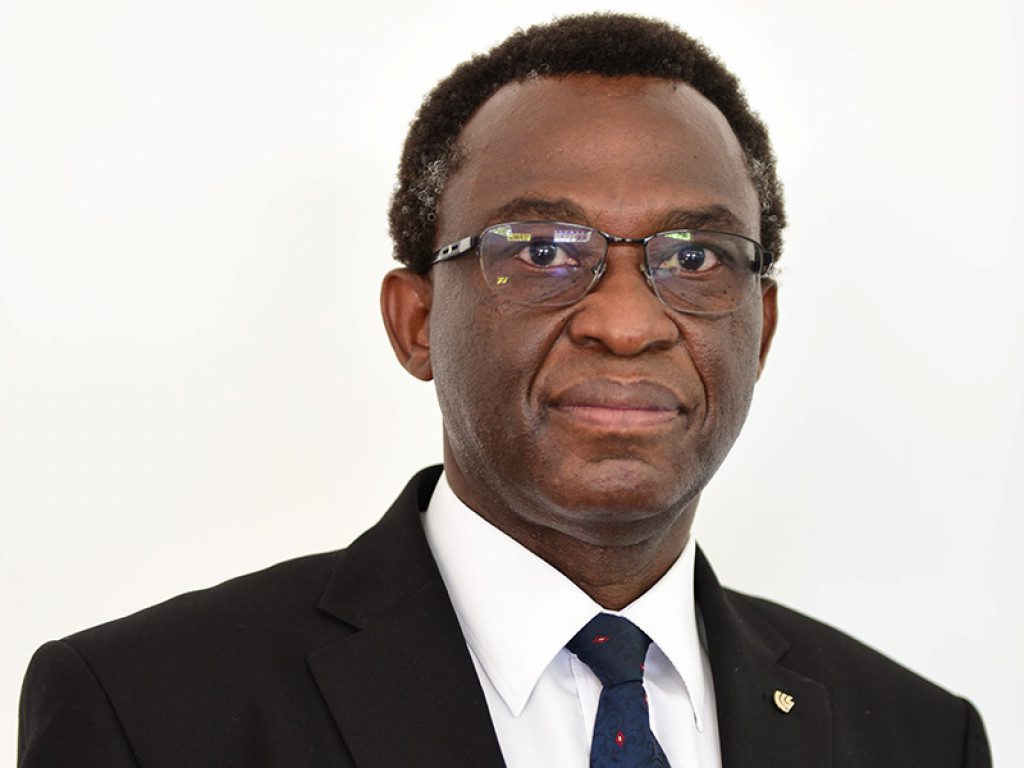
“All corporate decisions will be made in Zambia, by Zambians, for Zambians, with Zambia’s interest at heart”
Charles Sakanya, CEO, MCM
ANSWERING MODERN DEMAND
Tying into MCM’s larger mandate of increasing production levels, in the context of a modern demand for copper, the company is diversifying in pursuit of market needs, identifying and exploring the potential of value-added operations.
“A great MCM will add value to the copper cathode by implementing value add projects such as the production of wire bars, investment in the production of parts for electric motor vehicles and the solar industry.
“It is time for Zambians to start to look at value add plants to be run in Zambia,” Sakanya states.
Fuelling this shift is the growing worldwide adaption of electric vehicles (EVs). Sakanya is fully cognisant of this market trend and intends to ensure that MCM benefits from the positioning to monetise it accordingly.
“There is an anticipated shortfall of approximately 10 million tonnes of copper cathode by the year 2030, thanks to the EV and solar industries,” he tells us.
“Such projects as drawn copper wire and the manufacture of EV parts will greatly benefit Zambia. We plan to add value to the cathode by making wire bars for export,” he tells us.
Indeed, copper is the true cornerstone of the EV revolution, with each vehicle using double the amount of the metal compared to traditional internal combustion engines. Thanks to the conductivity of the metal’s properties, a significant amount of copper wiring is required to power electric automobiles. It is also an intrinsic component in various elements of EV infrastructure, outside of the vehicles themselves.
In addition to the response to EVs and copper cathode wires, MCM is also pursuing other avenues.
“MCM can embark on value add projects such as making fertilisers out of the sulphuric acid that we produce.”
A valuable by-product, as cathode production increases, so too will the production of sulphuric acid.
“By looking at sulphuric acid production, we will make fertilisers for the agrarian revolution as part of Zambia’s diversification into agriculture,” says Sakanya.
As the most widely produced chemical in the world, around half of the world’s supply of sulphuric acid finds application in agriculture and specifically in fertilisers. As an intrinsic component to modern methods of farming, by fuelling fertiliser production with greater stock of sulphuric acid, MCM can contribute to greater crop yields across the country.
This answers the need for diversification to secure the mine’s stability, overcoming the reliance of the volatile copper market.
By pursuing these further opportunities, MCM ultimately supports more sustainable job creation.
PROUDLY ZAMBIAN
Due to the inseparable socio-economic context of mining within the national industrial landscape, the rejuvenation and reinvention of MCM is a microcosm of the prosperity that the organisation wishes to drive across Zambia itself.
Indeed, as MCM grows, so too will its native country.
“We want to show that Zambians are capable of running their own mines, safely, cost-effectively, and profitably.”
This returns to the benefit of “cutting out the bureaucracy”, that Sakanya considers a true advantage in the re-modelling of the mine’s ownership structure.
The company has subsequently undergone a transformation that has MCM’s status as a proudly Zambian enterprise firmly at the core. For Sakanya, this national pride has always existed at MCM, but was never fully brought to the fore.
“The Mopani brand has a long-standing Zambian heritage. We will maintain MCM’s legacy, but this time around the Zambians themselves who want to compete on the world stage,” he states.
Whilst maintaining an aspirational view of future prospects, Sakanya is alert to the advantage that an organisation such as MCM already holds and will use this as the fulcrum to propel the company forwards.
“We already have a well-established market and the MCM brand continues to sell at a premium. MCM must therefore take advantage of this competitiveness in the sector to produce more.”
With the mine’s ownership now wholly in the hands of ZCCM-IH, a suitable rebranding ensued with the image of the robust Mopani tree at the fore.
“Our logo, letterheads, and safe-mining posters all speak of our new identity. MCM is currently the only mining company in Zambia wholly owned by Zambians.
“We would like to operate this asset and benchmark it to national players,” Sakanya comments.
“Once all these projects are completed within the next two to three years, MCM will produce eight to 10 million tonnes of ore per year – almost double its current capacity”
Charles Sakanya, CEO, MCMMCM: AN EMPLOYER OF CHOICE
“A successful MCM will create more jobs,” Sakanya believes. But of course, in order to truly attract and retain talent, a focus is needed on how MCM models itself as an employer.
“We want to make MCM the employer of choice – safe, stable, and profitable,” he adds.
For Sakanya, this begins with forging trust by fostering inter-personal relationships amongst staff members. All MCM employees are made to feel seen and empowered through rewards for performance and the regular recognition of achievements.
“We show them how they contribute to the supply chain and ensure they are involved in making the decisions that affect their work.”
MCM practices an open-door policy, whereby employee suggestions are analysed and implemented to contribute to safety, asset management, and production increase.
As a proudly national enterprise, currently only 0.45 percent of MCM’s 5,545 direct employees are expatriates. In addition to this workforce, MCM has 6,630 contractor employees in various areas of the operation.
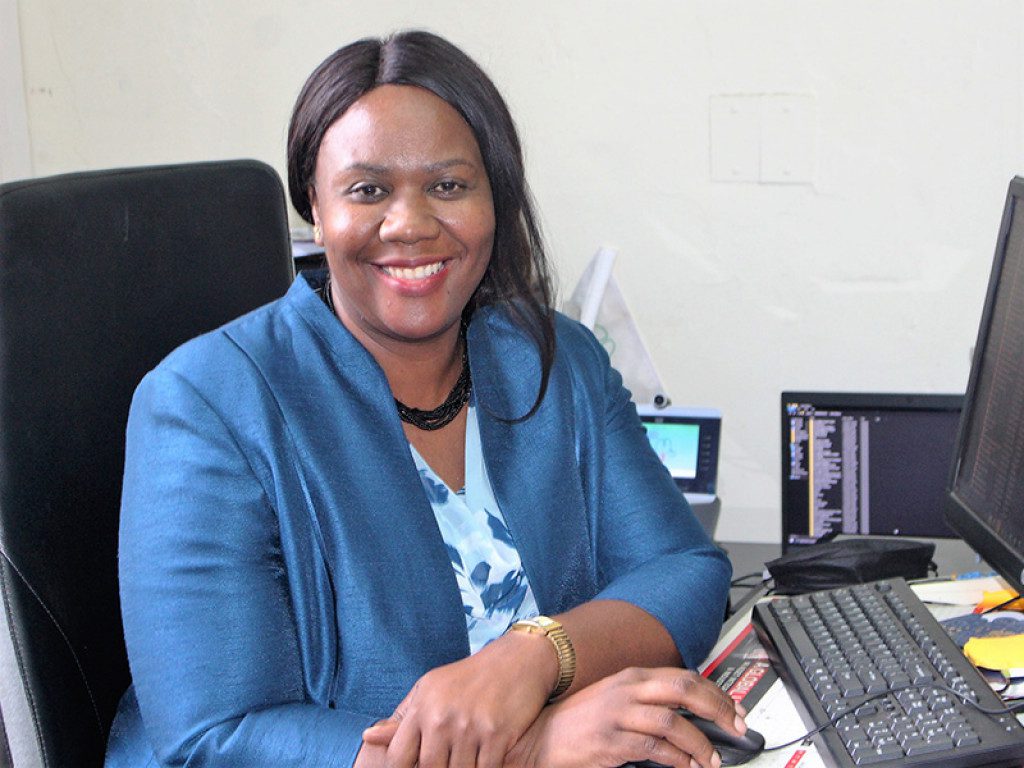
As a responsible corporate citizen intrinsically involved in sustainable local development, the role of MCM’s Corporate Affairs and CSR Manager, Lorraine Tembo, is paramount as the interface between company and community.
Adjacent to this, Tembo fulfils a key position in MCM’s aspirations as an employer of choice, empowering employees and encouraging talent retention by ensuring that the available human resources policies for staff management are both practical and implementable, as evidenced by the policies outlined above.
Echoing the treatment of its workforce, MCM is proud of the significant part that it plays in the livelihoods of the communities surrounding the company’s operations and endeavours to build resilience through various initiatives.
“The main purpose of my role is to manage the company’s corporate image building activities, corporate events, community support programmes, social assets, and devising mechanisms of recording, resolving and managing community and stakeholder grievances,” opens Tembo.
“In order to do this effectively, the Corporate Affairs department maintains an elaborate stakeholder register to ensure we have captured all relevant stakeholders that have an interest in our mining operations,” she continues.
A RESPONSIBLE CORPORATE CITIZEN
MCM’s numerous CSR and community initiatives encompass the company’s status as a socially conscious corporate citizen, that is fully cognisant of the beneficial role that it can perform. Indeed, since inception, MCM has invested over $200 million in various community projects dedicated to improving the living standards of local people.
By so doing, MCM hopes to enable its host communities to identify and address their own issues and opportunities to reduce dependence on the mine, using every chance to communicate on matters of mutual benefit consistently and in a timely manner to increase the awareness of services, operations and opportunities.
“We would like to motivate behaviour and attitude change, especially in young people, whilst also educating community stakeholders on matters of mutual interest and involving them in decision making,” states Tembo.
These investments in the local society extend from infrastructural development to water and sanitation, education, health, sports, and entrepreneurship development.
Complementary to this, MCM conducts ad hoc donations subject to varying community needs, whilst also supporting charitable organisations with their day-to-day operations.
“Through this good relationship, the communities tend to appreciate the company’s initiatives to contribute to overall poverty reduction, access to health and education, infrastructure and local business participation in the mining supply chain.”
From a corporate perspective, this translates to making MCM an attractive stakeholder prospect, maintaining an up-to-date and in-depth understanding of the company strategy whereby all stakeholders are provided with the most relevant information.
“Societal expectations of the mining industry encompass a broad range of environmental, social and governance challenges,” Tembo comments.
“For this reason, my role ensures the company has an effective communication plan that identifies the strategies and actions required to promote the productive involvement of stakeholders in decision-making and execution, ultimately ensuring that MCM maintains its social licence to operate (SLTO),” she concludes.
We contribute to ‘Making Mopani Great Again’ by ensuring good relationships between MCM and our host communities”
Lorraine Tembo, Manager Corporate Affairs and CSR, MCM
COMMUNITY CONSCIOUS
Alongside its commitment to education within the communities surrounding MCM, the company is actively involved in local sports initiatives.
MCM continues to invest in and sponsor the sporting activities of Nkana Football Club, Mufulira Wanderers, Nkana Golf Club, Mufulira Rugby Club, and Diggers Rugby Club, the latter of which it is a major sponsor.
“This has resulted in the ability for Zambia to stage international events such as the Zambia Open Golf Tournament, the Council of Southern Africa Football Association (COSAFA) Cup, international rugby tournaments, and the Motorcross of African Nations at MCM sporting facilities,” Tembo tells us proudly.
Parallel to this, MCM sponsors clubs dedicated to golf, tennis, rugby, women’s football, and squash. Expanding on why sports initiatives are so important to the company, Tembo comments, “MCM believes that investing in sport can widely foster national development and contribute to the economic growth of the nation.”
This economic growth is stimulated through business investment and employment. As an example, all football players at Nkana Football Club and Mufulira Wanderers draw a salary from funds provided through monthly MCM grants to the clubs.
“MCM believes that every child should be given a chance to develop their full potential in life despite one’s background; hence MCM established sports academies that looks after children’s educational needs amongst others.
“These sports academies bring about benefits such as talent identification at an early age, building self-esteem and giving children a strong sense of purpose. “Their participation in the academies instils in them the virtues of commitment and hard work,” Tembo observes.
Complementary to the emphasis on wellbeing with sports programmes, MCM participates in and contributes to the local healthcare sector.
“We proudly operate two hospitals in Kitwe and Mufulira, both of which are BSI ISO Certified,” Sakanya informs us.
Both facilities run full programmes on HIV screening, testing and treatment for employees and members of the public. The Kitwe institution also runs a club for sufferers of club foot at the Wusakile hospital.
“In addition, MCM runs a Malaria prevention programme in both Kitwe and Mufulira, reducing the incident rate to less than one percent,” he adds.
NAVIGATING CRISIS
MCM’s emphasis on health care and the wellbeing of the community rose to the fore during the past 20 months over the course of the COVID-19 pandemic.
Unfortunately, MCM itself was heavily impacted, recording 801 cases of COVID-19, 789 recoveries, and 12 deaths. In response to the outbreak of the pandemic, the company developed a COVID-19 management plan centring on three crucial steps: the formulation of pandemic management policy, the implementation of a COVID-19 Corporate Management Team, and weekly assessments of the effectiveness of COVID-19 control measures.
MCM was also quick to respond with prevention strategies, disseminating information about the spread of the virus across the mine’s sites and implementing transmission controls throughout the premises. This included temperature monitoring at access gates, wearing face masks, hand washing facilities, provision of hand sanitisers, daily rounds of spraying with disinfectant and regulating safe sitting distances on employee buses. This also comprised COVID-19 screening of travellers and employees returning from leave as well as the adjustment of shifts for employees in shared offices.
“During this period, MCM ensured that isolation facilities were maintained and equipped, and that medical personnel were trained in the national COVID-19 management protocols,” adds Tembo.
With the COVID-19 pandemic still ongoing, MCM is currently engaged in undertaking a rigorous vaccination campaign, resulting in 17 percent of the company’s staff being vaccinated.
“A lot of our employees are still sceptical about the vaccine, but we are confident that with time, a greater awareness of the benefits will translate into more employees being vaccinated,” she comments.
THE HEART OF THE MINE
With Tembo overseeing the crucial importance of MCM’s position as a community-conscious company, for Mambo Chooye, General Manager of Smelter and Refinery, his position is equally paramount in maintaining a forward-facing operation.
MCM’s processing facility comprises the smelter and refinery that has the capacity to produce 220,000 tonnes of cathode per annum.
At present, Chooye’s focus on internal operations entails sustaining works to maintain the integrity of the asset, returning to Sakanya’s strategic vision of guiding MCM through the aftermath of the Glencore International AG exit.
“We have managed to stabilise the plant from the time we came out of the six-month shutdown in 2019, whilst maintaining the refractory wear profile in the ISA furnace, and we look set to go into the next shutdown in 2022 without any major challenges,” Chooye tells us.
Once stabilised, Chooye will be instrumental in overseeing an increase in the treatment of copper concentrates to 850,000 tonnes per annum by 2025.
With MCM’s world-class competencies, Chooye is confident of these aspirations.
“MCM produces cathodes meeting LME Grade A specifications,” he continues.
“We also have the capacity to treat a variety of concentrates from different mines around the country, and qualified multi-disciplinary personnel employed to run various operations within the plants.”
Throughout operations, Chooye asserts how MCM maintains constant engagements and consultation with OEMs and a positive operational discipline that is key to the running of the plants. Effective maintenance management systems are implemented to yield good availabilities, and all operations are in alignment with accredited management systems including QMS ISO 9001:2008, OHSHAS 18001:2007 and EMS ISO 14001:2015.
We believe that sport binds communities through shared experiences, and shapes national character and pride. It also promotes a healthy active lifestyle, develops life skills, leadership abilities and offers youth employment alternatives”
Lorraine Tembo, Manager Corporate Affairs and CSR, MCM
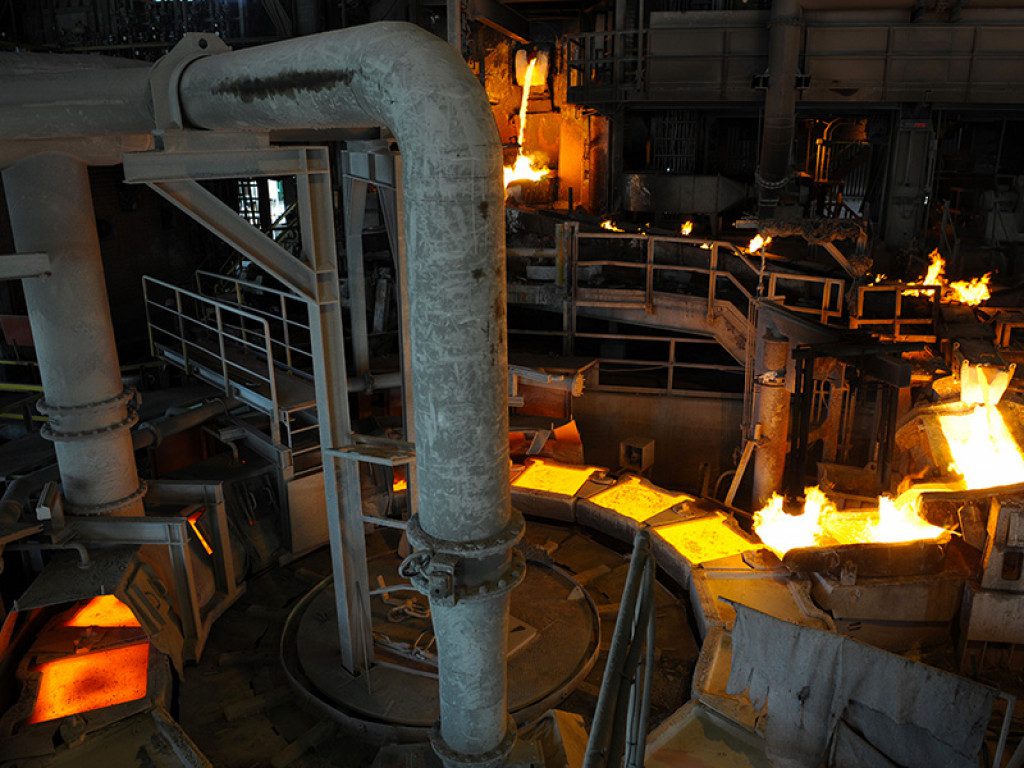
MODERNISING MCM
Turning to the facilities themselves, MCM’s smelter and refinery plants are equipped with automated systems and state of the art equipment.
Of course, it was not always this way. Indeed, MCM’s original smelter began with a reverberatory furnace that was installed in 1937, and not upgraded until 2006. This involved the commissioning of a 720k TPA Isasmelt furnace, a 12 MVA Matte Settling Electric Furnace, a 650 tpd oxygen plant and an acid plant with a design capacity of 1,050 tonnes of acid per day (Smelter Acid Plant Number One).
“Our secondary smelting operation also has three 13 inches by 17 inches pierce smith converters, two 400-tonne anode furnaces and a twin-casting wheel,” Chooye informs us.
In addition, in 2009 MCM commissioned a second acid plant with the capacity to produce 2,356 tonnes per day.
Modernisation has subsequently increased production and streamlined operations for greater efficiency.
“The modernisation of the smelter has bought in flexibility to treat concentrates from various sources, improved efficiencies and increased the throughput,” he adds.
“We moved from an old and problematic electric furnace to a more versatile Isasmelt furnace that is capable of running at 112.5t/h and producing a consistent matte grade of 64 percent copper.”
Through these improvements, MCM is able to effectively stabilise the plant within an hour of start-up and has moved away from human dependency, thereby reducing the risk of causing damage to the facility. In addition to improving the availability and utilisation of the plant, the physical and chemical quality of the anodes produced has also improved, keeping rejection rates to a minimum.
Within the move to modernisation, all smelting and refining processes at MCM are becoming increasingly sustainable.
This is best evidenced by the acid plant, where 95 percent of all sulphur dioxide emissions are captured and treated to produce sulphuric acid. This in turn further contributes to MCM’s production of fertilisers, in their efforts to support Zambia’s agricultural industry.
All sulphuric acid tank containers have secondary spill containment facilities, while the tank house at the refinery has an impermeable floor to contain any accidental leakages that are then recycled back into the process.
“The slimes drying plant that previously used cord wood fires has also been modernised to use rotary driers, thereby reducing our impact on deforestation,” Chooye comments.
MCM also keeps a close eye on ground water across the site, continually monitoring its quality and supply through the installation of wells.
Aside from these efforts, MCM is dedicated to ensuring compliance with regulatory standards to guarantee quality control.
“We have an elaborate and robust sulphur dioxide monitoring system that covers stack emission, our fence line and the community. This ensures that any upset conditions are rectified immediately.”
All emissions emanating from the plants are carefully monitored, with interlocks in place on stacks that prevent levels from exceeding the set limits.
“We have set up an Air Quality Control (AQC) unit whose main function is to control emissions through the use of a Trigger Action Response Plan (TARP).
“The AQC monitors stack emissions, emissions along the plant boundary and the community. The AQC operators have the authority to suspend plant operations once emissions reach the agreed threshold.”
In addition, MCM works closely with the Zambia Environmental Management Agency (ZEMA) on a daily basis to ensure that the mine is operating within the set regulatory limits.
Meanwhile, all chemicals used throughout MCM’s processes meet both local and international regulatory requirements, including the Montreal Protocol and the Stockholm Convention on Persistent Organic Pollutants (POPS).
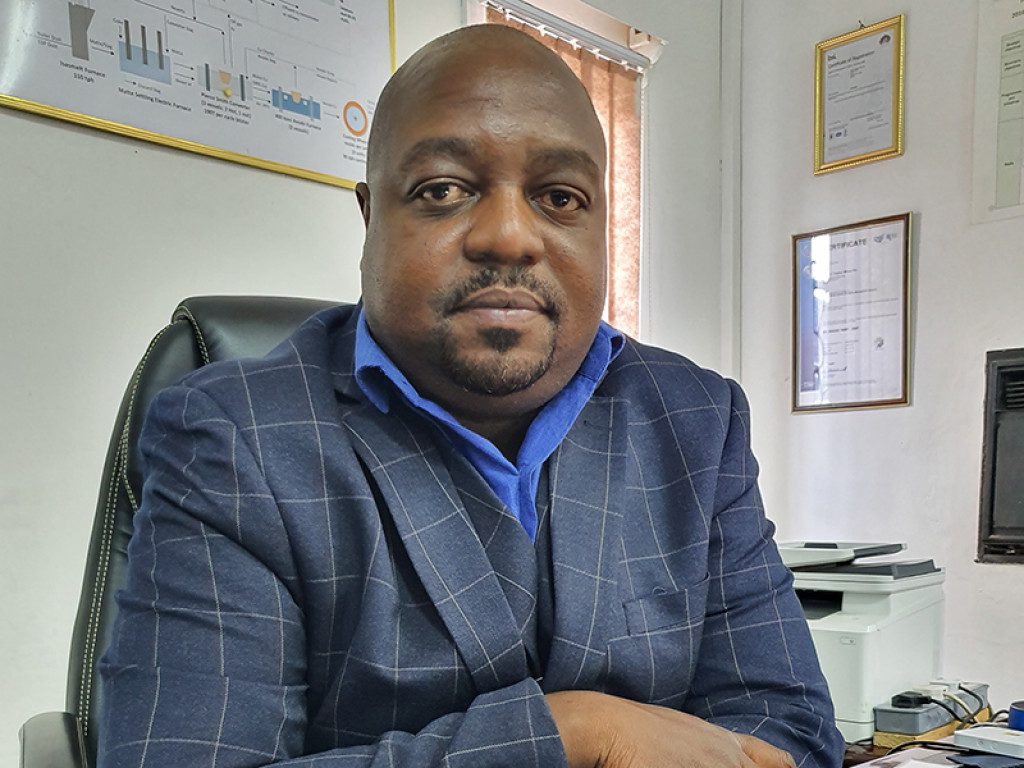
We have embraced a culture change in the department that focuses on safety, operational discipline, asset integrity, and production. This has since yielded very good results”
Mambo Chooye, General Manager Smelter and Refinery, MCM
A MINE FOR THE FUTURE
Looking to the years ahead, Sakanya remains focused on MCM’s major target of completing its ongoing expansion projects to increase production.
For the remainder of 2021, this consists of further stabilising operations in the wake of Glencore International AG’s company exit.
Within this, MCM’s targets include commissioning the Synclinorium concentrator before the end of the year, and an increase in copper cathode production of 17.16 percent. The fruits of these efforts alone will see MCM well on its way to achieving an EBITDA of $57 million – an improvement of 114 percent compared to 2020.
With 2021 dedicated to stabilisation, the following year addresses the theme of sustaining operations, which is where expansion projects become key. 2022 will see the commencement of the Synclinorium Pump Chamber project works, and further work on the Minola Deeps shaft, including headgear erection and shaft equipping. In addition, next year will also herald the installation of a second crusher, conveyor belt and dump truck loop construction, and the buttressing of tailings storage facilities (TSFs) at Nkana and Mufulira.
In addition to the company’s diversification projects, including modifying the Synclinorium concentrator to introduce a cobalt circuit, this will see MCM geared for an ambitious 2023.
“From 2023 onwards, MCM will begin a trajectory of growth,” says Sakanya.
“We will commission the pump chamber at the Synclinorium shaft and shutdown winding plant infrastructure at the central shaft to save cost.
“MCM will also pursue a production increase by expanding mining operations at both Nkana South and the Mufulira mine site, whilst completing the equipping and commission of the Minola Deep shaft,” he outlines.
Buttressed by this strategy and strengthened by the agility guaranteed through diversification, like the sturdy roots of the Mopani tree, MCM will continue to flourish and blossom on the Zambian landscape. Not only this, but the mine will maintain its status as one of the world’s largest mines and exporters.
For Sakanya, he holds nothing but optimism for the years ahead.
“The MCM team will continue to work smarter, embracing teamwork, to make Mopani great,” ends Sakanya.
